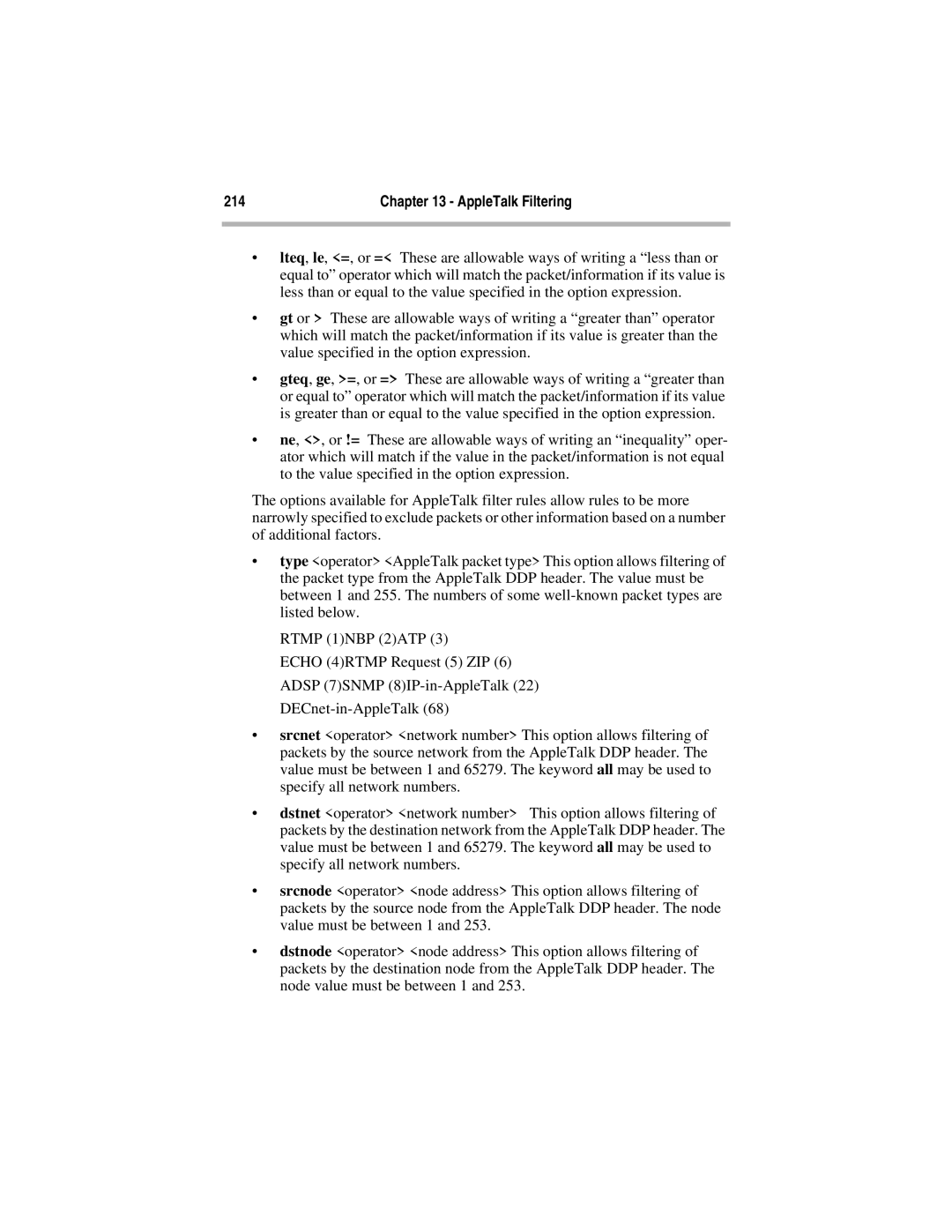214 | Chapter 13 - AppleTalk Filtering |
|
|
•lteq, le, <=, or =< These are allowable ways of writing a “less than or equal to” operator which will match the packet/information if its value is less than or equal to the value specified in the option expression.
•gt or > These are allowable ways of writing a “greater than” operator which will match the packet/information if its value is greater than the value specified in the option expression.
•gteq, ge, >=, or => These are allowable ways of writing a “greater than or equal to” operator which will match the packet/information if its value is greater than or equal to the value specified in the option expression.
•ne, <>, or != These are allowable ways of writing an “inequality” oper- ator which will match if the value in the packet/information is not equal to the value specified in the option expression.
The options available for AppleTalk filter rules allow rules to be more narrowly specified to exclude packets or other information based on a number of additional factors.
•type <operator> <AppleTalk packet type> This option allows filtering of the packet type from the AppleTalk DDP header. The value must be between 1 and 255. The numbers of some
RTMP (1)NBP (2)ATP (3)
ECHO (4)RTMP Request (5) ZIP (6) ADSP (7)SNMP
•srcnet <operator> <network number> This option allows filtering of packets by the source network from the AppleTalk DDP header. The value must be between 1 and 65279. The keyword all may be used to specify all network numbers.
• dstnet <operator> <network number> This option allows filtering of packets by the destination network from the AppleTalk DDP header. The value must be between 1 and 65279. The keyword all may be used to specify all network numbers.
•srcnode <operator> <node address> This option allows filtering of packets by the source node from the AppleTalk DDP header. The node value must be between 1 and 253.
•dstnode <operator> <node address> This option allows filtering of packets by the destination node from the AppleTalk DDP header. The node value must be between 1 and 253.
